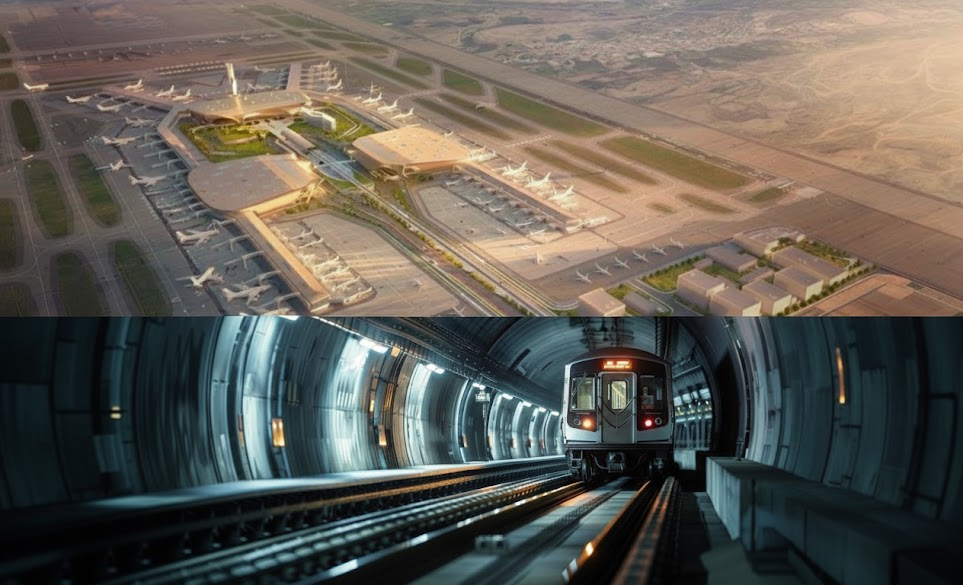The Mumbai Metropolitan Region (MMR) is embarking on its most significant infrastructure-led transformation in decades, driven by two newly operational projects: the Navi Mumbai International Airport (NMIA) and the fully completed Mumbai Metro Line 3 (Aqua Line). These projects, inaugurated recently, are working as twin engines to boost the region’s economy, redefine connectivity and fundamentally reshape the real estate market.
The air gateway: A catalyst for eastern growth
The Navi Mumbai International Airport, developed through a large-scale public-private partnership, is now operational, ready to work alongside the existing Mumbai airport and elevate the city into a global hub with a multi-airport system.
This new air gateway is the primary driver of growth in the eastern MMR. It is specifically designed to transform emerging regions like Panvel, Ulwe, Taloja, Kharghar, Karjat and Alibaug. The anticipation alone has already caused property values in Navi Mumbai to rise by 10 to 15 percent over the last year. Experts predict that areas closest to the airport, particularly Panvel and Ulwe, will see the sharpest increases, with prices in Panvel potentially climbing by another 20 to 25 percent in the immediate future.
The NMIA’s impact is not limited to housing. Its strategic location is a magnet for commercial growth, particularly attracting logistics companies, warehousing firms and major hospitality players. This is creating a new employment base and a self-sufficient ecosystem in Navi Mumbai.
The airport’s success is ensured by its integration with other major connectivity corridors, including the Atal Setu sea bridge (MTHL), which links Navi Mumbai to South Mumbai in minutes and future rail links like Metro Line 8 and the Panvel-Karjat railway line. These connections ensure that NMIA becomes easily accessible to millions across the wider state.
Also Read – ₹294 Crore Splash: What SBI’s Massive Housing Deal Tells Us About Mumbai Real Estate
The Underground lifeline: Unlocking central mumbai
Complementing the airport’s boost to the east is the completion of the entire Mumbai Metro Line 3. This 33.5-kilometer Aqua Line is the city’s first fully underground metro now connecting Cuffe Parade to Aarey JVLR with 27 stations.
The Metro is a game-changer for daily commuters, expected to serve over 13 lakh passengers every day and drastically cut the travel time between the northern suburbs and the historically congested south. Its final phase links key business and financial districts, including the Reserve Bank of India, the Bombay Stock Exchange, Mantralaya and Nariman Point, along with heritage areas like Fort and Marine Drive.
The fully operational Metro is already influencing real estate development across the city. Locations along its route, such as Santacruz, Andheri and Malad, are gaining status as highly desirable residential spots due to superior connectivity. Simultaneously, commercial hubs like BKC and Worli are seeing renewed interest from both companies and investors looking for prime office space with excellent transit links.
Crucially, the Aqua Line is designed for seamless integration with other transport systems, including suburban railways, other metro lines and the existing airport, solving the perennial challenge of “last-mile connectivity” for millions. This ease of travel is a major factor driving both residential and commercial real estate demand along the entire corridor.
A Stronger and more integrated metropolis
Together, the Navi Mumbai International Airport and the fully operational Metro Line 3 are leading in an era of coordinated and infrastructure-driven growth. The airport decentralizes economic activity and opens new investment channels, while the Metro improves the efficiency and liveability of the established city. This dual thrust is transforming the Mumbai Metropolitan Region into a more balanced, integrated and economically robust global city.
Stay Ahead of the Curve: Get exclusive market updates and news from Behind the Bricks – sign up for the latest real estate intelligence now!
Disclaimer: This article offers informational guidance only. Real estate is subject to market risks, policy changes and project timelines. Always consult a qualified financial advisor before investing.


Write Your Comment